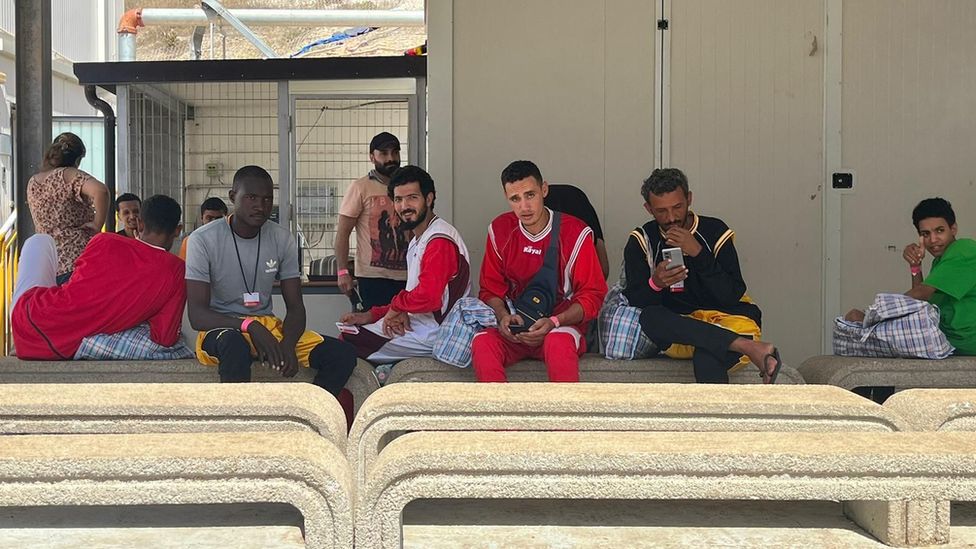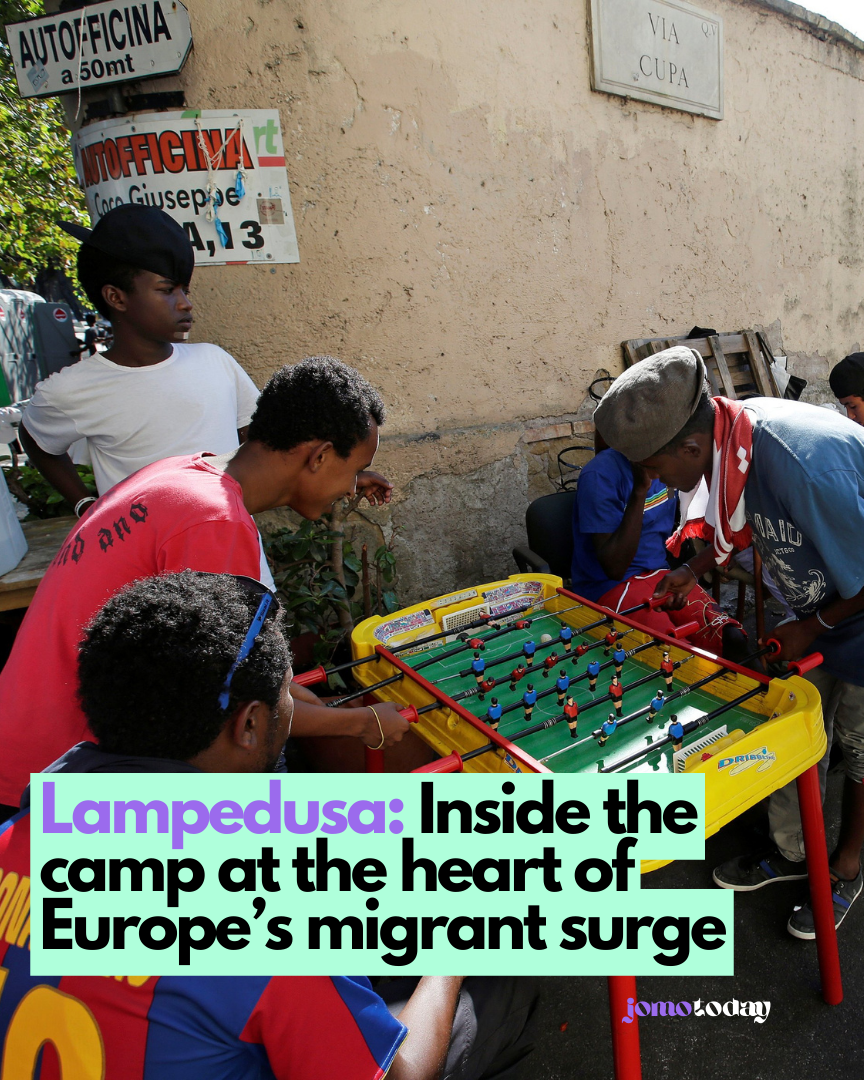Last week, a significant influx of migrants landed on the shores of Lampedusa, overwhelming the resources of this Italian island. Journalists Reha Kansara and Emir Nader from the BBC ventured into the holding centre, commonly known as the “Hotspot,” where migrants are detained.

Lampedusa’s Hotspot has experienced busier days. Just a day earlier, groups of migrants, mainly men from sub-Saharan Africa and the Middle East, sought shelter under sparse trees near the camp’s iron-gated entrance. As we entered the camp, those areas were now deserted, devoid of the previous overcrowding.
In recent months, the center has grappled with a capacity crisis. The Italian Red Cross estimates that the island received at least 10,000 new arrivals in the past week, many of them arriving by boat from Tunisia. Local residents stepped in to provide food, water, and clothing as migrants struggled to find space in a facility originally designed for only 400 individuals.
For a facility thrust into the international spotlight, the Hotspot is surprisingly compact, measuring just 200 meters in length. As we strolled through the camp’s grounds, a group of men danced to West African and Arabic music. Attempts to engage migrants in conversation were thwarted by the Red Cross, which insisted on government authorization.
Only a few women were visible, resting on makeshift beds, while many boys appeared to be in their early teens. The day before, we had spoken to Ahmed, a 20-year-old from Egypt, through the holding center’s gate. He recounted his three-day boat journey from Libya to reach Lampedusa. During our conversation, two soldiers interrupted, and Ahmed quickly reassured them that he was well cared for, stating that other migrants were afraid to speak to the media.
Ignazio Schintu, a representative of the Italian Red Cross, emphasized that having so many people in such cramped conditions with limited health services and logistics could disrupt the entire reception and relief process. Consequently, many migrants have been transferred by ferry to one of four processing centers in Sicily and mainland Italy.
Following last week’s surge in arrivals, Italian Prime Minister Giorgia Meloni, along with President of the EU Commission Ursula von der Leyen, visited the island. In an announcement characterized by strong language but lacking in specifics, Meloni’s government referred to the arrivals as an “invasion” and an “act of war.”
However, the island’s mayor, Filippo Mannino, holds a different perspective. He stated, “The island has been grappling with this phenomenon for 30 years now, but outsiders perceive complete chaos here: ‘Island in collapse,’ ‘Island under attack.’ This is not the case.”
Meanwhile, the EU is preparing to provide €1 billion (£872 million) in aid to Tunisia to bolster its economy and prevent boat departures. However, European cooperation is showing signs of strain, with the French government indicating its refusal to accept arrivals from Lampedusa.
Lampedusa finds itself caught between powerful international forces, and its future course will be determined by decision-makers elsewhere. Despite the challenges, the island does not appear to be in a state of crisis, nor is it destined for one. Its people do not adopt the hostile rhetoric of Italy’s political leaders but instead strive to address the challenge and find humane solutions, ensuring that locals willing to offer protection to seafarers are not left adrift.
“I’m not the one who can decide a solution because I’m just the mayor of a small island,” Mr. Mannino remarked. “But we have to choose whether to treat people all the same or not, whether they are Ukrainians fleeing war, or Africans fleeing war and persecution. Do we treat them all the same or do we treat them according to the color of their skin?”
Read more: A shadow of ‘Ukraine fatigue’ hangs over Polish politics






1 Comment